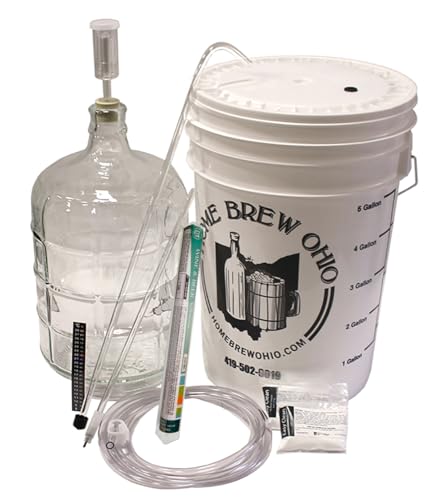Hi All,
Quick question about Tart Cherry wine. I'll keep it short as the key specs are looking good but......
I pitched a 2 gallon batch of Cherry wine with Tart Cherry concentrate and Sweet Black Cherries. Cold soaked for 5 days, used EC 118 yeast.
> SG at start is 1.090 with sugar added. I also added tannin and yeast nutrient
> PH looked to be a tad over 3 w a PH stick.
> Fermentation went well, died down after 6 days.
> Racked off the fermenter into glass; SG was 1.020
> Today I racked a second time to get off the lees ( 16 days since initial fermentation ) and the SG looks a tad over 1.00, call it 1.010. That would put ABV around 9.8%
> I've added K&C for clearing but no stabilizer as I'd like to airlock this batch and let it age out for awhile.
2 questions:
1. Is that Alcohol level high enough to age without sulfites or sorbate and
2. Is that a typical ABV for cherry fruit wine?
My first cherry batch was low as well, down in the 7% range when I first started this hobby. Some of that was impatience and some rookie mistakes.
Most of my wines are clocking in at 11- 12%, so I'm curious if this is just what alcohol level cherry wine develops or am I missing something.
Thanks for your feedback!
Quick question about Tart Cherry wine. I'll keep it short as the key specs are looking good but......
I pitched a 2 gallon batch of Cherry wine with Tart Cherry concentrate and Sweet Black Cherries. Cold soaked for 5 days, used EC 118 yeast.
> SG at start is 1.090 with sugar added. I also added tannin and yeast nutrient
> PH looked to be a tad over 3 w a PH stick.
> Fermentation went well, died down after 6 days.
> Racked off the fermenter into glass; SG was 1.020
> Today I racked a second time to get off the lees ( 16 days since initial fermentation ) and the SG looks a tad over 1.00, call it 1.010. That would put ABV around 9.8%
> I've added K&C for clearing but no stabilizer as I'd like to airlock this batch and let it age out for awhile.
2 questions:
1. Is that Alcohol level high enough to age without sulfites or sorbate and
2. Is that a typical ABV for cherry fruit wine?
My first cherry batch was low as well, down in the 7% range when I first started this hobby. Some of that was impatience and some rookie mistakes.
Most of my wines are clocking in at 11- 12%, so I'm curious if this is just what alcohol level cherry wine develops or am I missing something.
Thanks for your feedback!



















































